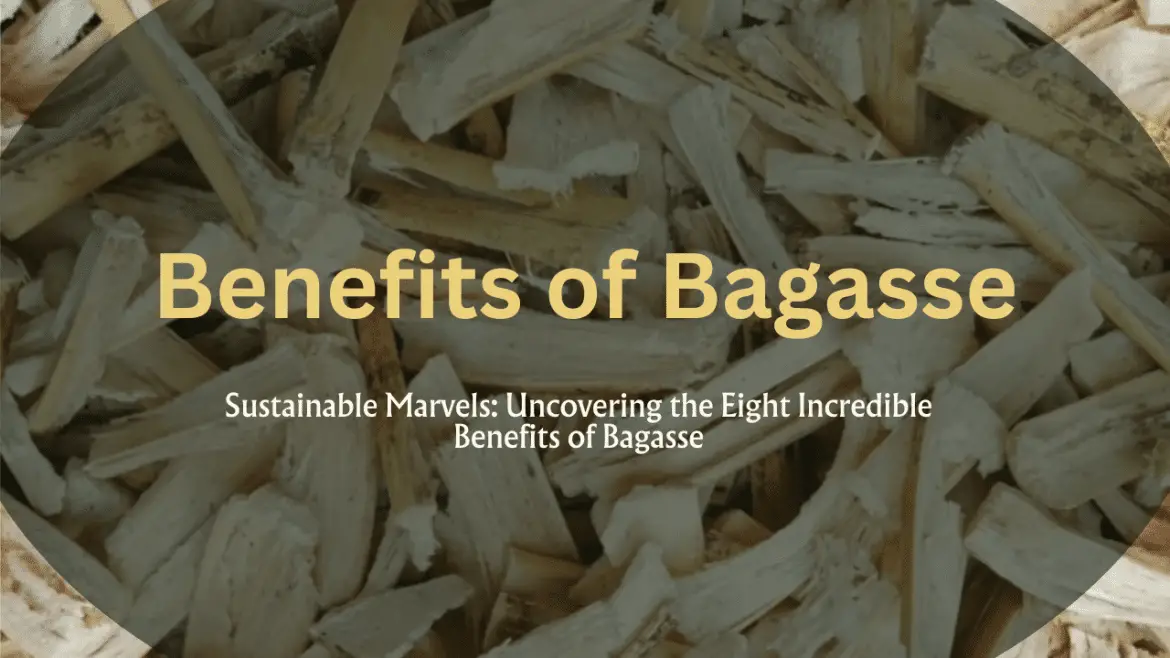Are you ready to be part of the eco-friendly movement & make a positive impact on the environment? Well, something unique called bagasse is helping in a big way. It is like a superhero made from sugarcane leftovers, making a big difference in how we care for our planet. In this article, we’ll check out eight (8) cool things about It and why it’s a fantastic eco-friendly choice.
It isn’t just a one-trick pony; it’s helpful in many ways! It is like a green superhero, from wrapping up your food to creating energy. It helps us generate less garbage and reduces the bad stuff we put into the air. So, if you’re curious about how this everyday hero is making our world cleaner and greener, relax and let’s learn about the excellent side of it. Come with us on this fun journey as we explore the fantastic world of eco-friendly choices!
Today, the growing environmental imbalance is a big concern. We need alternatives that minimize ecological impact. For that, bagasses step in as a viable solution. It offers a range of benefits that contribute to a more sustainable future. Now, the question is, why is bagasse an essential staple for an eco-friendly alternative?
So, as we know, adopting eco-friendly alternatives cannot be overstated in a world of climate change and pollution. The unique properties of bagasses address these concerns and present a promising path towards sustainability.
Before we dig into depth, we need to understand What Bagasses is.
What is Bagasse?
It is a fibrous remains obtained from sugarcane or similar types of plants after juice extraction. Surprisingly, this ostensibly unassuming byproduct has become crucial in sustainable practices. In-depth, it comes from the leftover stuff when we get juice from sugarcane. It’s composed of cellulose, hemicellulose, and lignin, creating a solid and eco-friendly material. Generally, most of the bagasse comes from sugarcane, but we also get it from other plants like bamboo and wheat. Having different sources makes valuable bagasse for lots of different things.
Now comes to know about the critical factor of uncovering the Eight Incredible Benefits of Bagasse.
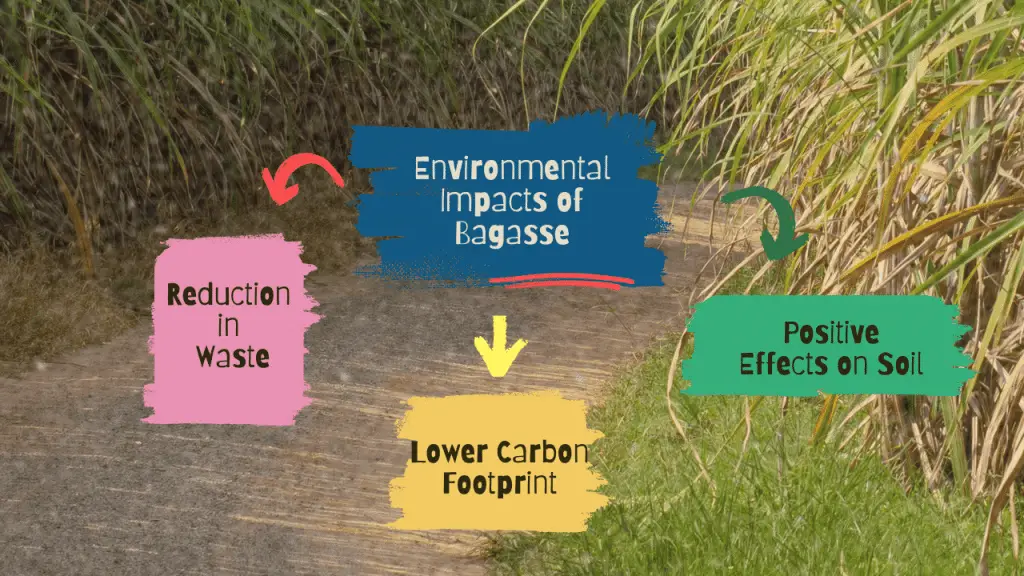
I) The Environmental Impact
- Reduction in Waste: Waste reduction is one of the significant benefits of Bagasses. Utilizing this byproduct in various ways helps us to reduce waste instead of throwing it away. This way, we minimize the environmental burden associated with waste disposal.
- Lower Carbon Footprint: It helps lower our carbon footprint because it’s made from plants that absorb carbon dioxide when they grow. When we use it instead of materials that release a lot of carbon dioxide when made, like plastic, we reduce the environmental impact. So, choosing bagasse is like taking a more minor step on the carbon footprint scale. You may calculate your carbon footprint scale.
- Positive Effects on Soil: It positively affects the soil through its organic composition. When added to the Earth, it acts as an organic amendment and contributes essential elements to the soil structure. It is rich in carbon and nitrogen, promoting microbial activity in the soil. As it decomposes, it releases nutrients, enhancing soil fertility. Additionally, it improves water retention and aeration, creating a favourable environment for plant growth. This organic enrichment fosters a healthier soil ecosystem, supporting sustainable agricultural practices.
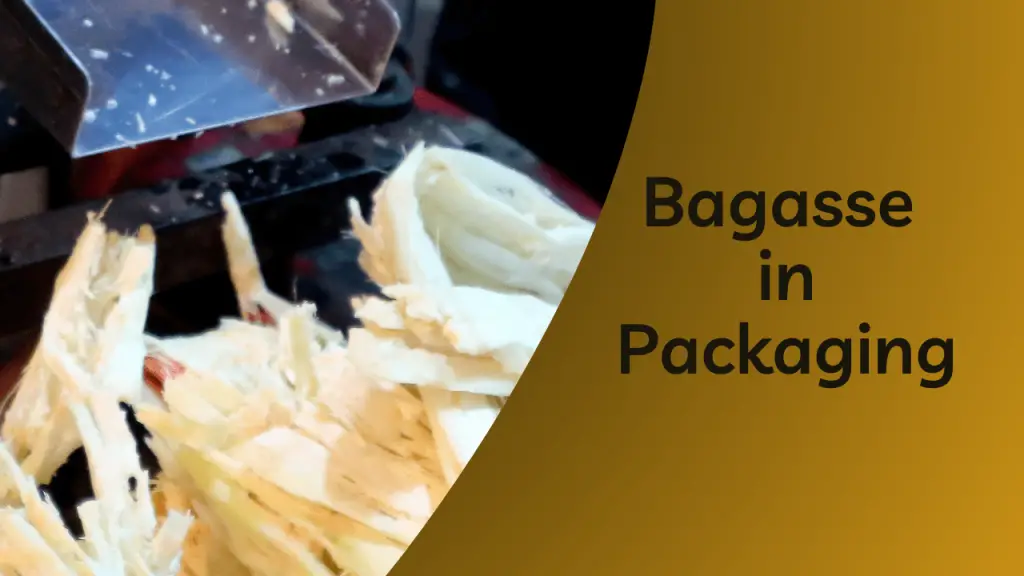
II) Revolution in Packaging
- Biodegradable Packaging Solutions: The biodegradability of bagasse packaging comes from its organic composition. Its cellulose, hemicellulose, and lignin are responsible for the rise of microbial activity and environmental conditions and facilitate its natural breakdown; unlike traditional plastics, synthetic polymers are resistant to microbial degradation. Because of its naturally decomposed properties, it contributes to a more sustainable waste management system. It reduces the persistence of non-biodegradable materials in the environment. Choosing sustainable catering supplies is a smart business move and a meaningful way to help the environment. For example, FOOGO Green makes and sells eco-friendly products and offers compostable plates, biodegradable takeaway containers, and wooden cutlery from renewable materials like palm leaves and sugarcane. Using these products can reduce your carbon footprint and show your commitment to sustainability to your community.
- Innovation in Bagasse-Based Packaging: People keep developing new and better ways to make packaging more substantial and valuable. They’re figuring out how to fix any problems with its durability, ensuring that bagasse keeps working well as a packaging material. According to Market Research Future, the global market for Bagasse-based packaging is projected to grow at a compound annual growth rate (CAGR) of 6.10% from the year 2022 to 2030. This growth is attributed to ongoing innovations in manufacturing processes, resulting in enhanced durability and water resistance of Bagasse products.
- Comparisons with Traditional Packaging Materials: When we look at bagasse compared to traditional packaging materials, it stands out as a leader in sustainability. Scientific data from life cycle assessments conducted by environmental researchers reveals that bagasse production has a significantly lower environmental impact than conventional packaging materials like plastic and Styrofoam. This is because it is a byproduct of sugarcane processing, utilizing what would otherwise be discarded. At the same time, traditional materials often involve resource-intensive manufacturing processes. Furthermore, its eco-friendly nature goes beyond its origin. Studies show that bagasse-based packaging has a lower carbon footprint, contributing to reduced greenhouse gas emissions. Its biodegradability is another crucial aspect, demonstrated by research indicating that it decomposes naturally, minimizing long-term environmental impact compared to materials that persist for many years. Considering these scientific findings, it’s evident that bagasse is not just a preferred choice for environmentally conscious consumers; it’s a scientifically sound choice based on objective assessments of its environmental performance. As consumers increasingly seek sustainable options, scientific data supports that choosing bagasse-based packaging aligns with ecological responsibility and the desire for eco-friendly alternatives.
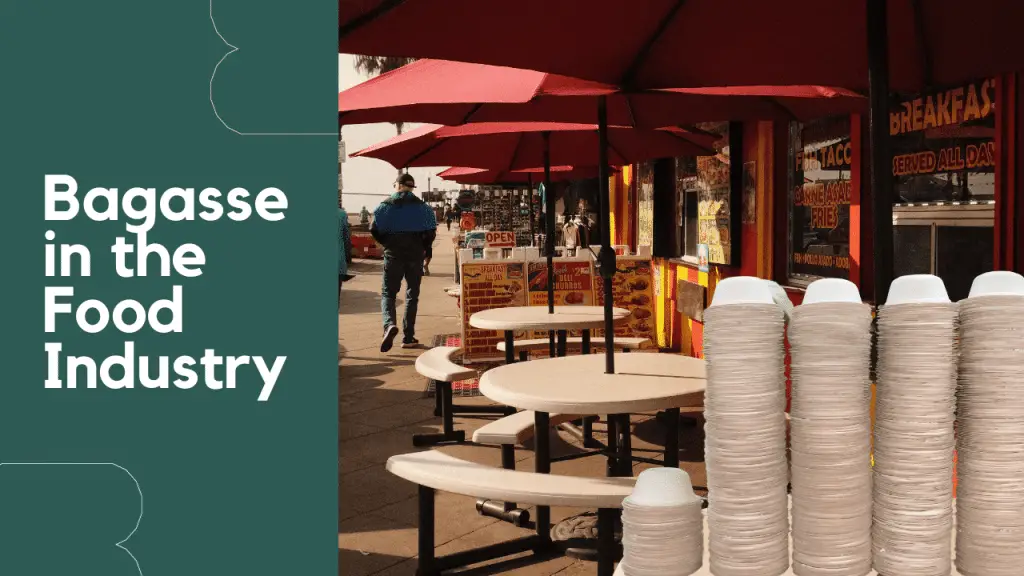
III) In the Food Industry
- Utilization in Disposable Utensils: Imagine bagasse is like a superhero helping the food industry. This superhero is made from sugarcane leftovers. The food industry likes to use this superhero to make things we use once, like plates, bowls, and cutlery. It’s an excellent alternative to the plastic stuff we usually use. Now, let’s talk science! Bagasse is unique because it comes from sugarcane, and scientists have found that using it to make plates and cutlery is better for the Earth. When we use bagasse instead of plastic, it’s like making a choice that is kinder to our planet. Bagasse items can naturally break down over time, while plastic takes a really long time to go away. So, by using bagasse, the food industry is helping the Earth stay healthy and ensuring we have an excellent alternative to plastic stuff.
- Advantages of Food Containers: Hey there! Imagine you have a fantastic lunch box or food container made from something called bagasse. It’s getting famous because it’s strong and can handle heat really well. So, when you put hot food in it, the container stays strong and doesn’t get all mushy. Now, let’s talk about why this is cool! It is a unique material that comes from sugarcane, and it’s incredible because it’s good for the environment. These food containers made from bagasse are like superheroes—they’re tough and can handle hot food, just like your favourite action hero! So, when people use these Bagasse containers, they’re making an intelligent choice. They get something that works really well, keeps their food safe, and at the same time, they’re being kind to the planet. It’s like having a strong and helpful friend in your lunch bag!
- Support for Sustainable Practices: If you see your favourite restaurants and places that make yummy food. Some of them are starting to use something called bagasse in what they do. It’s like a secret ingredient, but not really a secret! When they use bagasse, it’s like they’re joining a team that wants to do things that are good for our planet. Bagasse is a unique material that comes from sugarcane, and when restaurants use it, they are eco-friendly, which means they’re trying to be kind to the Earth. Guess what? People like you and your family also like it when restaurants use bagasse. So, it’s like the restaurants are doing something good for the Earth, and at the same time, they’re doing what people like. It’s like having a double win—good for the planet and good for the hungry tummy!
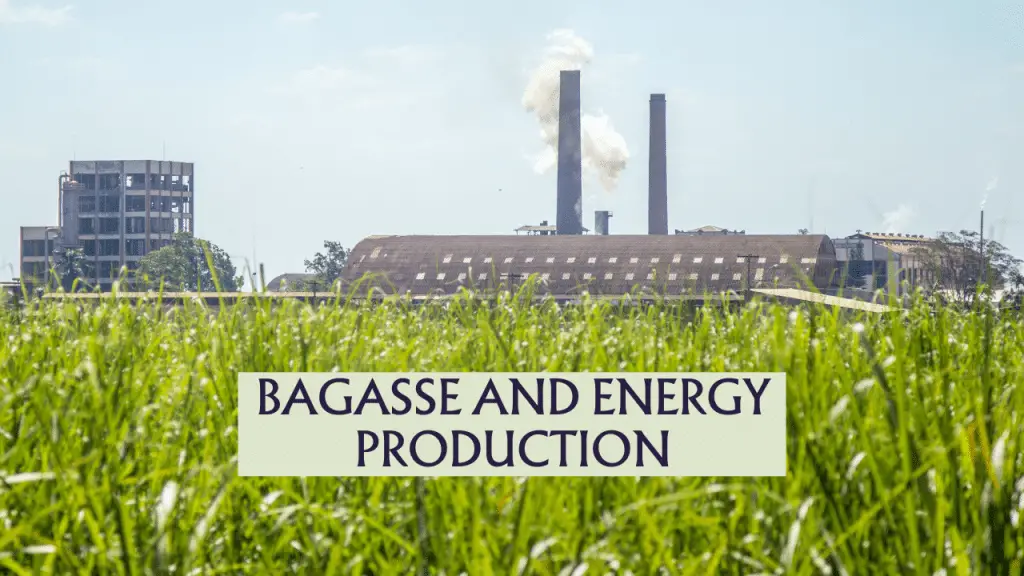
IV) Bagasse and Energy Production
- Role in Renewable Energy: Alright, let’s think of this sugarcane byproduct as a superhero who helps make electricity in a really cool way. It is made from leftover bits of sugarcane, and scientists have found that it’s fantastic for making clean and good energy. So, here’s the science part: it is full of things that can burn, like wood, but even better. When we burn this, it makes heat, and we can turn that heat into electricity. This electricity is clean and doesn’t make the air dirty, which is fantastic for the planet. So, it is like a special superhero fuel that helps us make electricity without hurting the Earth. It’s like magic—turning sugarcane leftovers into power for our homes and schools!
- As Biomass Fuel: Alright, imagine bagasse as a superhero fuel. When we burn bagasse, it gets boiling, like a cosy campfire. Here’s the cool part: we can use that heat to make electricity, the kind that powers our lights and gadgets. So, think of it as a clean and green energy source. It’s like a superhero because, when we use it, we don’t need to use things like coal or oil that can make our air not so clean. So, by using sugarcane byproduct, we’re making electricity in a way that’s good for our planet and helps us not use up too much of those old fossil fuels. It’s like bagasse is our eco-friendly superhero, ensuring we have power without harming the Earth too much!
- Contributions to Green Energy: Okay, let’s imagine the world is like a giant puzzle, and we’re trying to find better ways to get the energy we need, like the electricity that powers our homes and schools. In this puzzle, it is like a unique piece that helps us go green. Now, here’s the cool part: Sugarcane byproducts are unique because we can use it over and over again. It’s like having a magic plant that keeps growing, and we can use it to make energy without running out. So, when people talk about bagasse as a renewable resource, they mean it’s like a never-ending helper in making our power more eco-friendly. It’s like a green superhero in our big energy puzzle!

V) Economic Benefits
Alright, let’s imagine a big pizza-making company. Instead of using regular boxes made from expensive materials, they decided to use boxes made from bagasse, which comes from sugarcane.
So, because it is not too expensive, the pizza company saves money. Now, here’s the cool part: because they’re using bagasse, they need more people to help make these special pizza boxes. So, they hire more folks from the neighbourhood to join their pizza box-making team.
As they make more pizza boxes with bagasse, people start to notice, and other pizza companies want to use these special boxes too. This means the demand for sugarcane byproducts goes up, and the company needs even more people to help. So, not only does the pizza company save money, but it also creates jobs for people in the neighbourhood.
Now, because more people are working and making things, there’s more money flowing into the neighbourhood. People have jobs, they buy something, and the whole area becomes busier and grows. That’s what we call economic growth—everything is getting more active and better!
So, using bagasse helps the pizza company save money, gives people jobs, and makes the neighbourhood grow. It’s like a win-win for everyone!
VI) Challenges and Solutions
It has advantages but also has challenges like durability and water resistance. Ongoing research and innovation are needed to overcome these limitations. Investing in technology and analysis is essential to address these challenges. Improving processing techniques and material engineering can make it better. Collaboration among industries, researchers, and policymakers is crucial to make the most of bagasse. Working together can drive innovation and encourage more use of bagasse-based products.
VII) Bagasse: A Global Phenomenon
- India’s Bagasse-Based Products: In India, several restaurants and food businesses have shifted to using bagasse-based plates and containers. This switch has not only reduced the reliance on traditional plastic but has also created a demand for its products. It’s a success story because it shows how choosing bagasse can be good for businesses and the environment.
- Thailand’s Packaging Revolution: In Thailand, there’s been a growing trend in using bagasse for food packaging. Street vendors, cafes, and even bigger restaurants are choosing bagasse containers instead of plastic. This has led to a decrease in plastic waste and has been a positive step toward a more sustainable and eco-friendly approach.
- Kenya’s Agricultural Innovation: In Kenya, bagasse is being explored beyond food packaging. Some innovative farmers are using it as a component of organic farming. They mix bagasse into the soil, improving its quality and helping crops grow better. This dual use of bagasse shows its versatility and positive impact on both waste reduction and agriculture.

VIII) In Agriculture
- Soil Enrichment: Bagasse is more than just waste. When put in the soil, it acts as a natural fertilizer, making the ground better and helping plants grow.
- Agricultural Uses: It is used in different ways in farming, like covering the soil and making compost. This helps create a cycle where waste is used again, which is good for the environment and supports agriculture.
- Circular Economy in Agriculture: Using bagasse in farming creates a cycle where waste is used again, which helps the environment and agriculture.
Recap of Bagasse Benefits
In conclusion, the benefits of bagasse extend far beyond its origin as a byproduct. From waste reduction to economic growth and global sustainability, it is a versatile and impactful eco-friendly alternative.
The journey towards a sustainable future requires collective effort. Encouraging individuals and industries to choose eco-friendly alternatives like bagasse is a step in the right direction.
As we explore the sustainable benefits of bagasse, let it serve as a call to action. Sustainable living is not a choice; it’s a necessity for the well-being of our planet & future generations.

